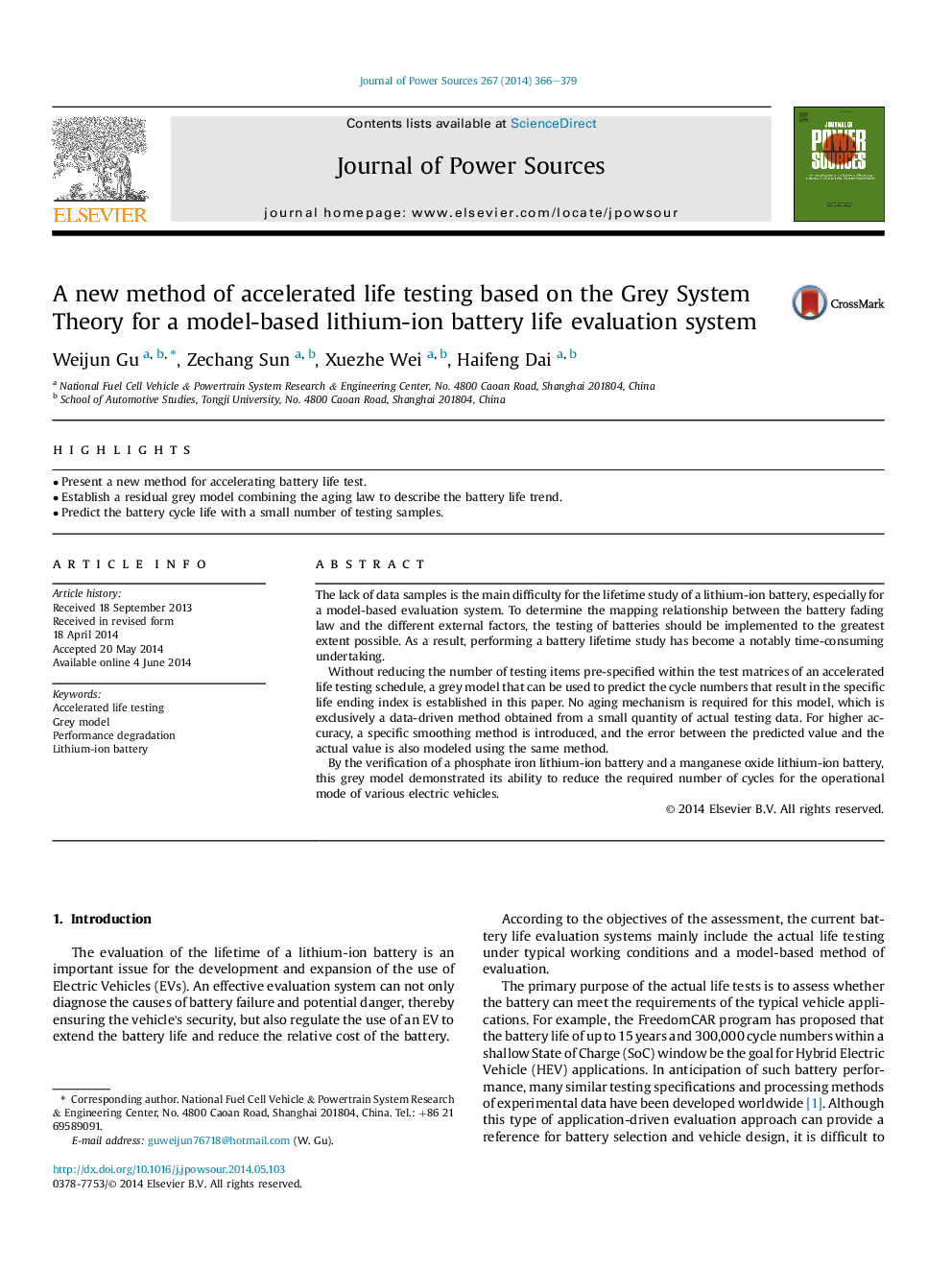| کد مقاله | کد نشریه | سال انتشار | مقاله انگلیسی | نسخه تمام متن |
|---|---|---|---|---|
| 1286640 | 1497965 | 2014 | 14 صفحه PDF | دانلود رایگان |
• Present a new method for accelerating battery life test.
• Establish a residual grey model combining the aging law to describe the battery life trend.
• Predict the battery cycle life with a small number of testing samples.
The lack of data samples is the main difficulty for the lifetime study of a lithium-ion battery, especially for a model-based evaluation system. To determine the mapping relationship between the battery fading law and the different external factors, the testing of batteries should be implemented to the greatest extent possible. As a result, performing a battery lifetime study has become a notably time-consuming undertaking.Without reducing the number of testing items pre-specified within the test matrices of an accelerated life testing schedule, a grey model that can be used to predict the cycle numbers that result in the specific life ending index is established in this paper. No aging mechanism is required for this model, which is exclusively a data-driven method obtained from a small quantity of actual testing data. For higher accuracy, a specific smoothing method is introduced, and the error between the predicted value and the actual value is also modeled using the same method.By the verification of a phosphate iron lithium-ion battery and a manganese oxide lithium-ion battery, this grey model demonstrated its ability to reduce the required number of cycles for the operational mode of various electric vehicles.
Journal: Journal of Power Sources - Volume 267, 1 December 2014, Pages 366–379
